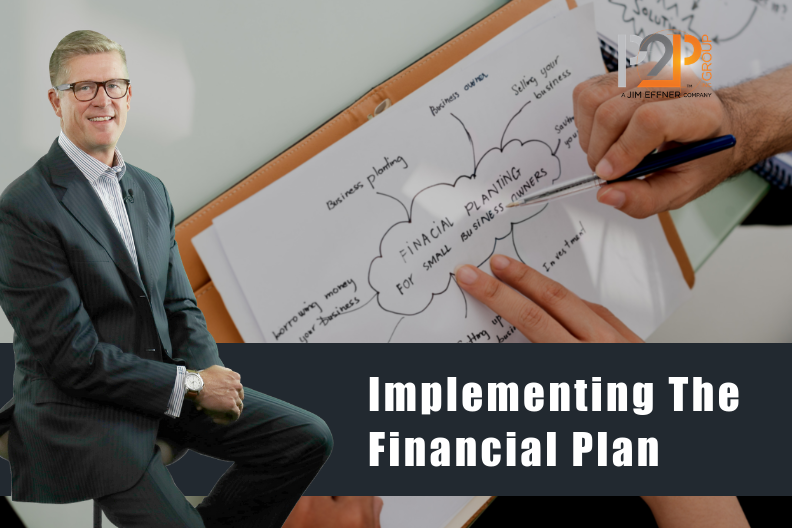Taking Action: Moving Forward with Your Financial Plan

At a certain point in the financial advisor/client relationship comes the time to move your financial plan to action. This is where the rubber hits the road. When all of your hard work of asking questions, digging deeper, building a relationship and crunching the numbers is turned into a personalized financial plan that you present to the client and ask them to move forward with.
I call this the implementation stage of the sales cycle. In an ideal world, your client would implement all of your advice on life insurance, retirement planning, education planning, disability insurance, and more. However, the vast majority of clients are rarely in a position where they can follow all of your recommendations right away.
As a result, it’s very important to have a course of action for when a client lacks the funds or the discretionary cash flow to address all the issues your plan says should be addressed. I find this to be a rather controversial and stimulating topic when out in the field teaching. Advisors have vastly different approaches and prioritize different aspects of financial planning based on their work experiences. But the bottom line is that you should be able to offer consistent advice that you can defend and communicate succinctly to your clients.
As an example, let’s assume a client needs $1 million of life insurance and a $2,500 a month supplemental disability policy. The client also needs to save an additional $500 a month for their kids’ education and an additional $1,000 a month for retirement.
However, you provided a concise financial breakdown in your fact-finder meeting, and you are aware that, at best, the client has $500 a month to work with. That will likely represent 99% of your clients.
Very rarely are you going to come across a client who possesses the complete amount of discretionary cash flow to cover every single problem their plan identifies. Therefore, it’s important for you to be confident about what you prioritize.
What Not To Do
I cannot tell you specifically what to recommend, but I can offer how not to go about it. Often times, I see reps suggesting what they think the client wants to hear. For these reps, such advice is a very subjective process, and their advice constantly changes, varying from one client to the next.
You absolutely must cease this immediately.
One of the most attractive things about working with a professional, regardless of industry, is their level of confidence in their beliefs, what they’re willing to stand for, and more importantly, what they’re willing to jump on a sword for.
Your business is not about pleasing your clients. It’s not about finding hot buttons and figuring out what they’ll buy. Your business is about communicating what you believe with a tremendous level of conviction to each client and being willing to walk away from clients who disagree.
My Planning Philosophy
As a former rep and as an trainer today, my priority is risk management. I help clients find the $1 million necessary for life insurance, which may initially be all term insurance. Then, I suggest they buy disability insurance before we begin discussing saving money.
Once they are saving, my priority shifts to retirement, then to education. I can’t tell you how many challenging conversations I have had with clients who were far underinsured in both life and disability. These clients would look at me and say, “Listen, all I want to talk about is saving money for my kids. I won’t talk about anything else.”
When that happens, I’d simply close my briefcase and move on. That’s not a client who I wanted to work with. Knowing what you stand for and how you communicate it to your clients is imperative. Make sure you understand your position and that you can articulate it with pride and conviction.
I always made clear to my clients that very few clients were able to implement the full plan I created for them immediately. One of the advantages of working with me was my ability to help them prioritize correctly based on their financial needs and goals.
And, while the fundamental philosophy behind the plan remained the same, I did not offer a cookie-cutter approach to financial security. I sought to understand them – the facts, yes, but also the feelings, the story behind the human being. Once I understood them, I could draw upon my knowledge and help them prioritize based on what’s important to them.
The next time you’re ready to move your financial plan into action, make sure you have a clear vision of where aspects of the plan rank in priority. Be ready to explain why with conviction. Help your client understand that very few people are able to implement a plan that will generate total financial security immediately. It’s a process and journey that can span decades. You are here to help guide them along the way.
[wd_hustle id=my-newsletter! type=embedded]






